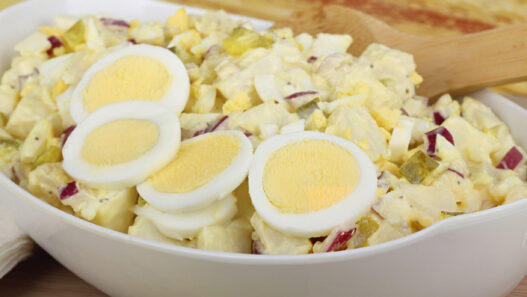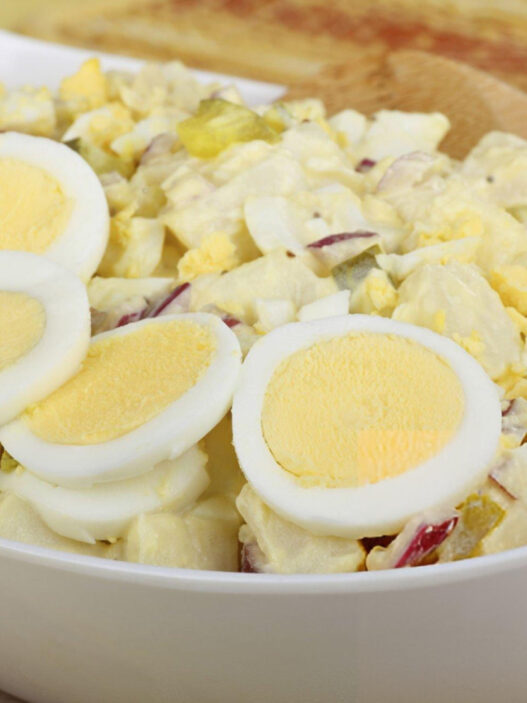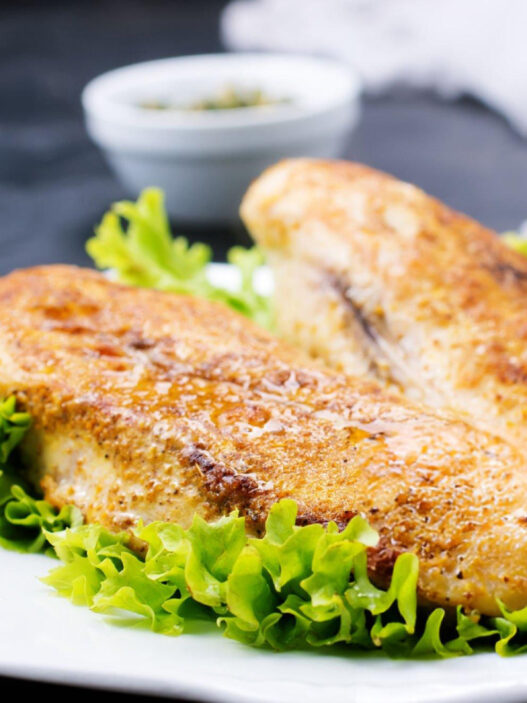Golden, chewy, and perfectly salty, soft pretzel bites are a homemade snack that never disappoints. Whether you’re preparing for a casual weekend gathering or simply craving something warm and savory, these bite-sized pretzels bring bakery-level comfort straight to your kitchen.

Ingredient Breakdown
Flour forms the backbone of the dough, and using all-purpose flour ensures a tender, fluffy interior with just enough structure to hold its shape. Spoon and level the flour for accuracy, avoiding a dense dough that lacks that signature pretzel chew.
The yeast, warm water, and sugar create the perfect environment for a strong rise. The water should be lukewarm—around 100°F (38°C)—to gently awaken the yeast. A touch of sugar fuels the yeast and encourages a soft, light crumb.
Melted butter brings subtle richness, and salt enhances every bite with just the right amount of seasoning. Combined, they give the pretzels their satisfying depth of flavor.
The baking soda bath is what transforms simple dough into a classic pretzel. Boiling the dough briefly in a water and baking soda solution is essential—it jumpstarts browning, encourages puffing, and gives the crust its signature pretzel chew.
Finish each pretzel bite with a sprinkle of coarse sea salt or pretzel salt for that quintessential crunch. For dipping, pair with spicy cheese sauce, grainy mustard, or honey dijon to enhance every savory mouthful.
Step-by-Step Dough Preparation
Begin by mixing warm water, yeast, and sugar. Let this mixture rest until foamy. This indicates that the yeast is alive and ready to work. Once activated, add in salt, melted butter, and flour—starting with a smaller amount and adding more as needed to form a soft, workable dough.
As the mixture comes together, kneading becomes essential. Use the dough hook or your hands on a lightly floured surface to knead for five minutes. This builds strength and elasticity into the dough, which is key for a chewy bite. A perfectly kneaded dough will be smooth and bounce back when gently pressed. You can also perform the “windowpane test”—stretching a small piece of dough until it becomes thin and translucent without tearing.
Once kneaded, cover the dough with a clean towel and let it rest for 10 to 30 minutes. This brief pause relaxes the gluten and makes shaping much easier. During this time, you can prepare your baking soda bath on the stovetop.
Shaping, Boiling & Baking
Divide the rested dough into six equal parts and roll each into long, even ropes—roughly 20 inches in length. If the dough resists rolling or springs back, let it rest again for 10 minutes to allow the gluten to relax further.
Slice each rope into bite-sized pieces, keeping them between 1.5 and 2 inches. This uniform sizing ensures even cooking and a consistent texture in every bite.
Boil 8 to 10 pieces at a time in the baking soda bath for just 10 to 15 seconds. This quick dip adds that signature pretzel flavor and allows the exterior to firm up. Drain well using a slotted spoon and transfer the bites to your prepared baking sheets.
Sprinkle the damp dough with coarse salt before baking. Bake at 400°F (204°C) for about 15 minutes, or until the bites are puffed and golden with crisp, crackly edges. Serve warm for best flavor and texture.

Recipe Tips & Frequently Asked Questions
Preventing overly dry or dense dough:
Measure flour accurately and avoid over-kneading. A soft, tacky dough is ideal.
Handling sticky dough without over-flouring:
Lightly dust your hands and surface, but only add flour in small amounts to maintain dough softness.
Getting the most out of the baking soda bath:
Keep the boil brief—no more than 15 seconds—or the bites may develop a bitter taste.
Storing and reheating for next-day freshness:
Store in an airtight container at room temperature for up to 3 days. Reheat in the oven for 5 minutes at 350°F (177°C) for a just-baked feel.
Making the dough ahead and refrigerating before baking:
After boiling, refrigerate unbaked bites for up to 24 hours, then bake as directed.
Can I use bread flour instead of all-purpose?
Yes, but the result will be chewier and denser.
What happens if I skip the baking soda bath?
You’ll lose the pretzel-like crust and golden brown finish—it’s a crucial step.
Can I freeze pretzel bites before or after baking?
Yes. Freeze before baking (after boiling) or after baking. Reheat straight from frozen in a 350°F oven.
How do I make sweet versions, like cinnamon-sugar pretzel bites?
Skip the salt topping. After baking, brush with melted butter and toss in cinnamon sugar.
Is it possible to make this recipe without a stand mixer?
Absolutely. A large bowl and sturdy spoon will do—just be prepared for a bit more elbow grease when kneading.
What to Serve With This Recipe
Soft pretzel bites are endlessly versatile. Pair them with warm beer cheese dip, creamy honey mustard, or a sharp cheddar spread for an irresistible snack.
They’re also a fantastic companion to hearty dishes like chili, beef stew, or creamy potato soup. Use them as a cozy bread alternative to soak up savory broths.
Add them to a charcuterie board for a unique twist—nestled among salami, prosciutto, olives, and artisan cheeses, they add chewy contrast to crisp crackers and soft spreads.
For game day or parties, arrange the bites around a bowl of dip and watch them vanish in minutes. They’re also ideal for movie night, paired with flavored popcorn and chilled drinks.
Soft pretzel bites are more than just a snack—they’re a delightful project that yields warm, golden pillows of dough with an addictively chewy bite. Perfect for dipping, sharing, or savoring solo, these pretzels deliver all the joy of fresh-baked comfort in a fun, bite-sized form. Whether you’re making them for a crowd or just because, this recipe is one you’ll reach for again and again.
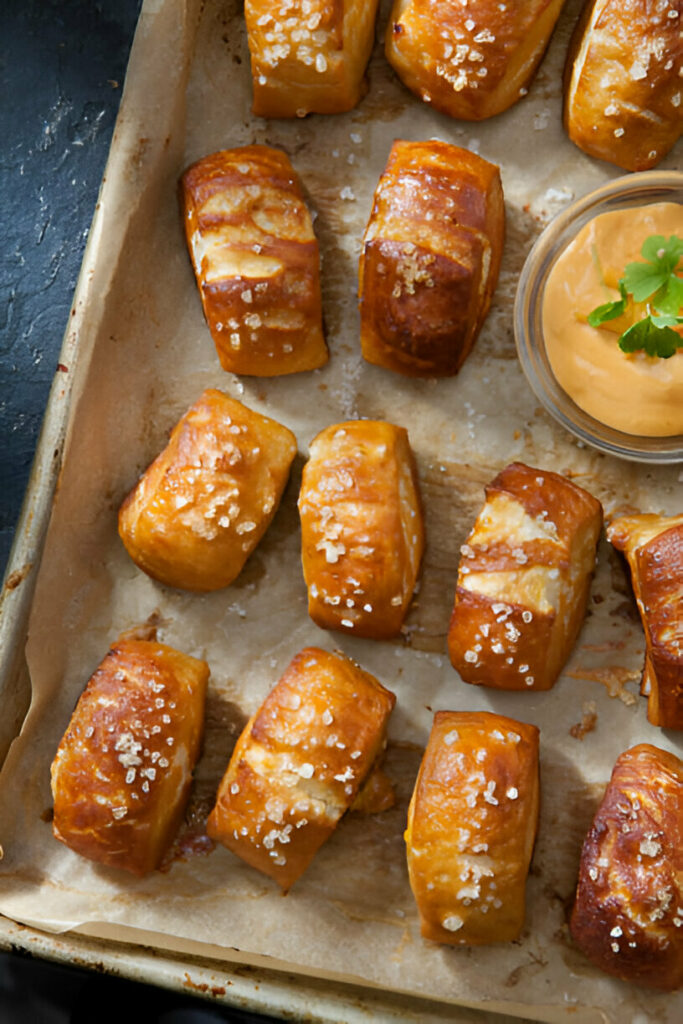
Ingredients
1 Tablespoon (14g) unsalted butter, melted and slightly cooled
1 Tablespoon brown sugar or granulated sugar
1 teaspoon salt
2 and 1/4 teaspoons (7g) instant or active dry yeast (1 standard packet)
1 and 1/2 cups (360ml) warm water (lukewarm, around 100°F/38°C)
3 and 3/4 – 4 cups (469–500g) all-purpose flour (spooned and leveled), plus more for dusting
Topping: coarse sea salt or pretzel salt
Baking Soda Bath:
1/2 cup (120g) baking soda
9 cups (2,160ml) water
Optional for Serving:
Spicy cheese sauce or mustard of choice
Instructions
Begin by preparing the dough. In the bowl of a stand mixer fitted with a paddle or dough hook attachment, combine the warm water, yeast, and sugar. If you don’t have a stand mixer, a large mixing bowl and sturdy wooden spoon or silicone spatula will work just fine. Cover the mixture and let it sit for about 5 minutes, or until a foamy layer appears on the surface, indicating that the yeast is active.
Add the salt, melted butter, and 3 cups (375g) of the flour to the bowl. Beat on low speed for about 1 minute, scraping down the bowl as needed. Then incorporate another 3/4 cup (95g) of flour and continue mixing until the dough starts pulling away from the sides, roughly 2 minutes. If the dough is still very sticky, gradually add the final 1/4 cup of flour and beat for another minute until it becomes more cohesive.
Switch to the dough hook if not already using it, and knead the dough in the mixer for 5 full minutes. Alternatively, transfer to a lightly floured surface and knead by hand for the same duration. If the dough becomes sticky while kneading, lightly sprinkle with a bit of flour—just a teaspoon at a time—to maintain a soft, slightly tacky texture without drying it out. The dough is ready when it’s supple and bounces back slowly when pressed with a fingertip. For added assurance, perform a windowpane test by stretching a small portion of dough until it becomes translucent without tearing.
Loosely cover the dough with a clean kitchen towel and let it rest for 10 to 30 minutes. During this time, you can prepare the baking soda bath: bring the water and baking soda to a boil in a large pot.
Preheat the oven to 400°F (204°C). Line two baking sheets with silicone baking mats for best results or parchment paper lightly greased with nonstick spray or butter.
Once the dough has rested, divide it into six roughly equal portions. Lightly flour your work surface—only a minimal amount is needed, as some stickiness will help with rolling. Roll each portion into a 20-inch rope. If the dough resists stretching or shrinks back, allow it to rest for 10 minutes under a towel to relax the gluten, then continue rolling. Slice each rope into bite-sized pieces, around 1.5 to 2 inches long.
Gently drop 8 to 10 pieces into the boiling baking soda bath, letting them cook for 10 to 15 seconds. This step helps achieve that signature pretzel texture and deep golden crust. Use a slotted spoon or spatula to lift them from the water, allowing excess moisture to drain before placing them onto the prepared baking sheets. While the bites are still damp, sprinkle with coarse sea salt. Repeat with the remaining dough.
If needed, the boiled but unbaked pretzel bites can be covered and stored in the refrigerator for up to 24 hours before baking.
Bake in the preheated oven for approximately 15 minutes, or until the bites are puffed and golden brown. Serve them warm with your favorite dipping sauce.
To store leftovers, keep them covered at room temperature for up to 3 days. They will lose some softness over time, but a quick reheat in the microwave or a 350°F (177°C) oven for 5 minutes will bring them back to life.
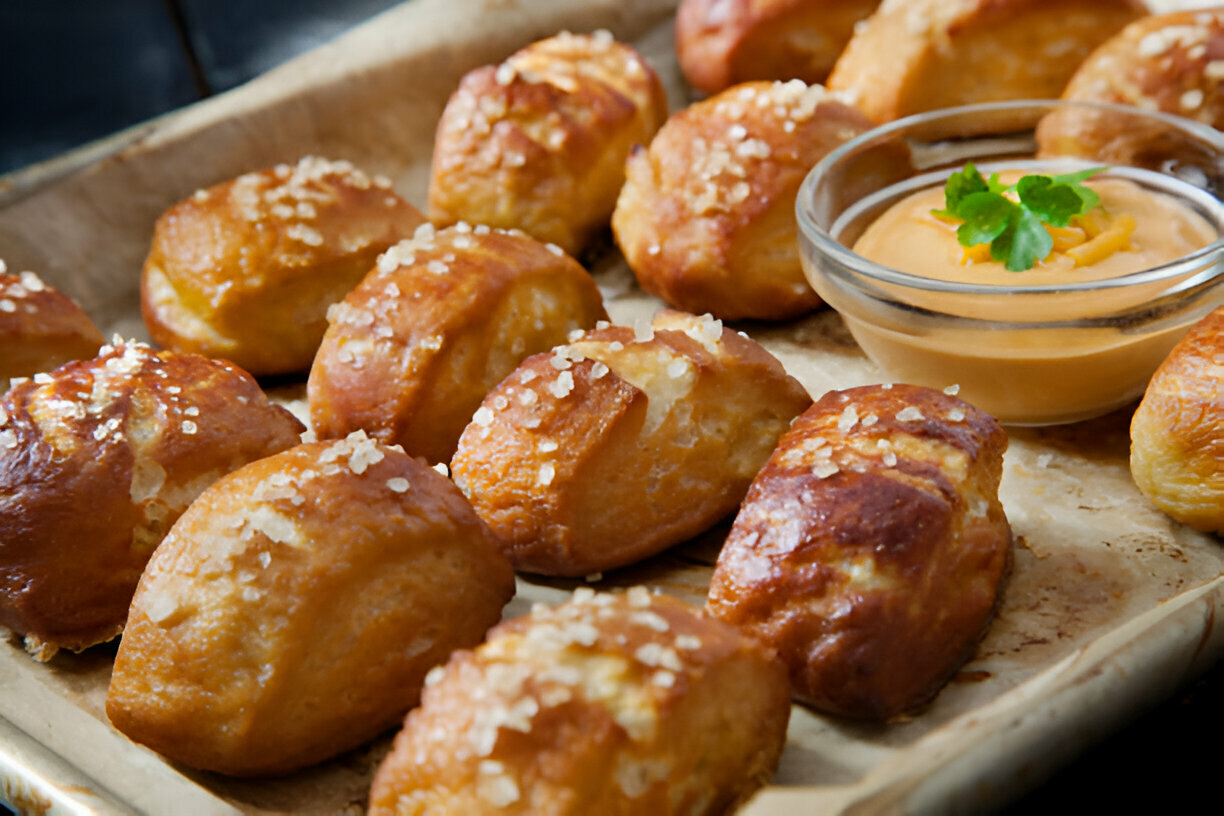
Soft Pretzel Bites Recipe
Ingredients
- 1 Tablespoon 14g unsalted butter, melted and slightly cooled
- 1 Tablespoon brown sugar or granulated sugar
- 1 teaspoon salt
- 2 and 1/4 teaspoons 7g instant or active dry yeast (1 standard packet)
- 1 and 1/2 cups 360ml warm water (lukewarm, around 100°F/38°C)
- 3 and 3/4 – 4 cups 469–500g all-purpose flour (spooned and leveled), plus more for dusting
- Topping: coarse sea salt or pretzel salt
Baking Soda Bath:
- 1/2 cup 120g baking soda
- 9 cups 2,160ml water
Optional for Serving:
- Spicy cheese sauce or mustard of choice
Instructions
- Begin by preparing the dough. In the bowl of a stand mixer fitted with a paddle or dough hook attachment, combine the warm water, yeast, and sugar. If you don’t have a stand mixer, a large mixing bowl and sturdy wooden spoon or silicone spatula will work just fine. Cover the mixture and let it sit for about 5 minutes, or until a foamy layer appears on the surface, indicating that the yeast is active.
- Add the salt, melted butter, and 3 cups (375g) of the flour to the bowl. Beat on low speed for about 1 minute, scraping down the bowl as needed. Then incorporate another 3/4 cup (95g) of flour and continue mixing until the dough starts pulling away from the sides, roughly 2 minutes. If the dough is still very sticky, gradually add the final 1/4 cup of flour and beat for another minute until it becomes more cohesive.
- Switch to the dough hook if not already using it, and knead the dough in the mixer for 5 full minutes. Alternatively, transfer to a lightly floured surface and knead by hand for the same duration. If the dough becomes sticky while kneading, lightly sprinkle with a bit of flour—just a teaspoon at a time—to maintain a soft, slightly tacky texture without drying it out. The dough is ready when it’s supple and bounces back slowly when pressed with a fingertip. For added assurance, perform a windowpane test by stretching a small portion of dough until it becomes translucent without tearing.
- Loosely cover the dough with a clean kitchen towel and let it rest for 10 to 30 minutes. During this time, you can prepare the baking soda bath: bring the water and baking soda to a boil in a large pot.
- Preheat the oven to 400°F (204°C). Line two baking sheets with silicone baking mats for best results or parchment paper lightly greased with nonstick spray or butter.
- Once the dough has rested, divide it into six roughly equal portions. Lightly flour your work surface—only a minimal amount is needed, as some stickiness will help with rolling. Roll each portion into a 20-inch rope. If the dough resists stretching or shrinks back, allow it to rest for 10 minutes under a towel to relax the gluten, then continue rolling. Slice each rope into bite-sized pieces, around 1.5 to 2 inches long.
- Gently drop 8 to 10 pieces into the boiling baking soda bath, letting them cook for 10 to 15 seconds. This step helps achieve that signature pretzel texture and deep golden crust. Use a slotted spoon or spatula to lift them from the water, allowing excess moisture to drain before placing them onto the prepared baking sheets. While the bites are still damp, sprinkle with coarse sea salt. Repeat with the remaining dough.
- If needed, the boiled but unbaked pretzel bites can be covered and stored in the refrigerator for up to 24 hours before baking.
- Bake in the preheated oven for approximately 15 minutes, or until the bites are puffed and golden brown. Serve them warm with your favorite dipping sauce.
- To store leftovers, keep them covered at room temperature for up to 3 days. They will lose some softness over time, but a quick reheat in the microwave or a 350°F (177°C) oven for 5 minutes will bring them back to life.
Notes
Make Ahead & Freezing Tips
-
Freezing Baked Bites:
- Skip coarse salt before baking.
- Cool completely, freeze in an airtight container or zip-top bag for up to 3 months.
-
Reheat from frozen:
- Oven: Brush with water, sprinkle salt, bake at 350°F (177°C) for 10 minutes.
- Microwave: Heat until warm.
-
Freezing Dough:
- Store dough in an airtight container for 2–3 months.
- Thaw overnight in the fridge before using.
-
Refrigerating Dough:
- Cover and chill for up to 1 day.
- Shape while cold, but let bites puff up for 1 hour before boiling and baking.
Special Tools
- Stand mixer
- Baking sheets
- Silicone baking mats or parchment paper
- Pizza cutter or bench scraper
- Large pot
- Coarse salt
Flour Note
- Bread flour can replace all-purpose for chewier texture.
- Do not use whole wheat flour.
Cinnamon Sugar Version
- Skip salt and bake bites plain.
- While baking, melt 4 tbsp (60g) unsalted butter.
- Mix 3/4 cup (150g) sugar + 1½ tsp cinnamon.
- After baking, brush bites with butter, then roll in cinnamon sugar.
- Best enjoyed same day (butter causes sogginess over time).
Yeast Reference
- See the Baking with Yeast Guide for common yeast questions.
Egg Wash Note
- No egg wash needed—salt sticks to wet dough after boiling.
- Want extra shine? You can still brush with beaten egg before salting and baking.

